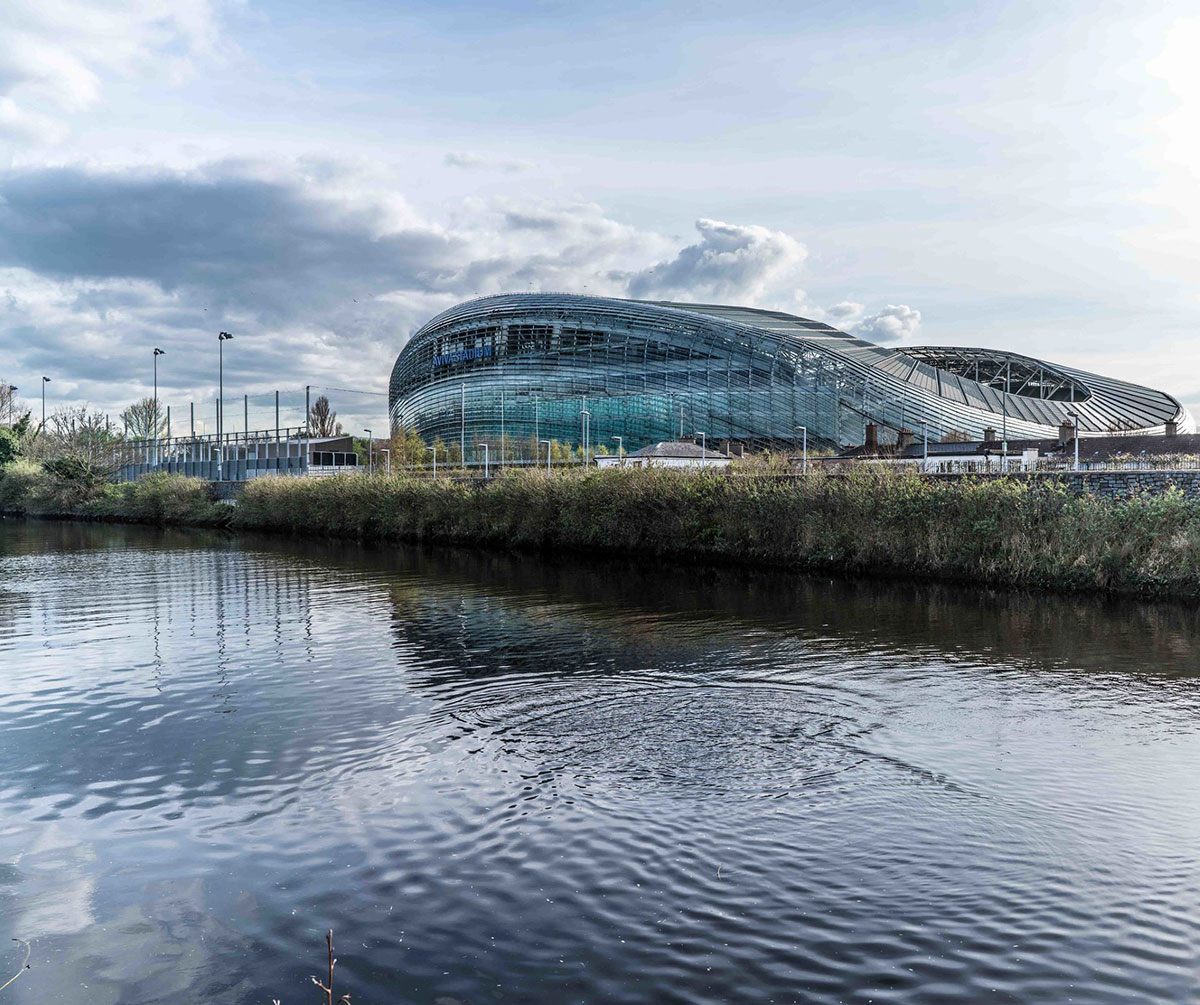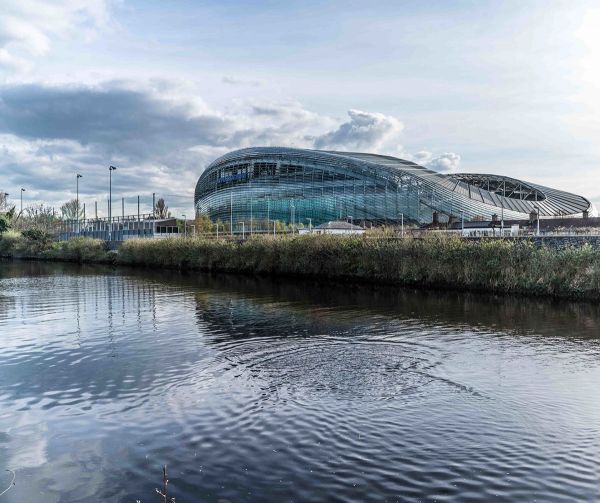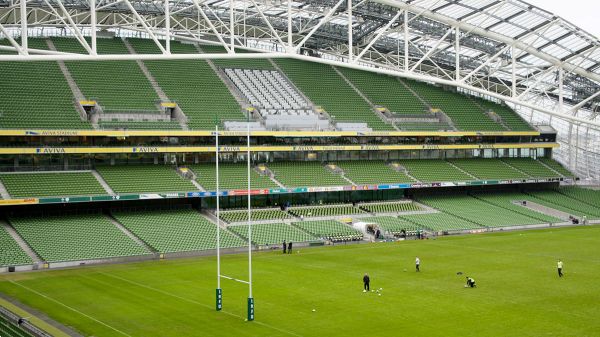The Aviva Stadium, historically known as the Lansdowne Road Stadium, is a sports venue built in 1872 and completely renovated in 2007. The refurbishment more than doubled the capacity of the sports stadium from 24,000 to 52,000 spectators. The expansion of the stadium represented a major architectural and engineering challenge, due to the need to maintain the same location, because of its roots and sentimental value in the city of Dublin, Republic of Ireland.
The Dodder River surrounds the stadium to the east and south, providing the first major natural barrier, but not the only one. To the north, the sports complex building is bordered by residential neighbourhoods, while to the west it is crossed by a railway line. This situation made it necessary to expand the stadium – to more than double its capacity – without leaving the area it already occupied.
To solve this challenge, asymmetrical stands were designed, with steep slopes and undulating shapes that fit the limits of the plot. In addition, a tunnel was created for the railway line, which literally crosses under the stands of the stadium. A riverside promenade was also built, providing the residents with a public space where they can enjoy nature.
In short, the Aviva Stadium in Dublin is an architectural and engineering masterpiece that was completed thanks to technological advances in the field of construction, whilst fully respecting its history and environment.
By Alberto Lopez, Senior Structural Engineer in Amusement Logic’s Architecture Dept.











